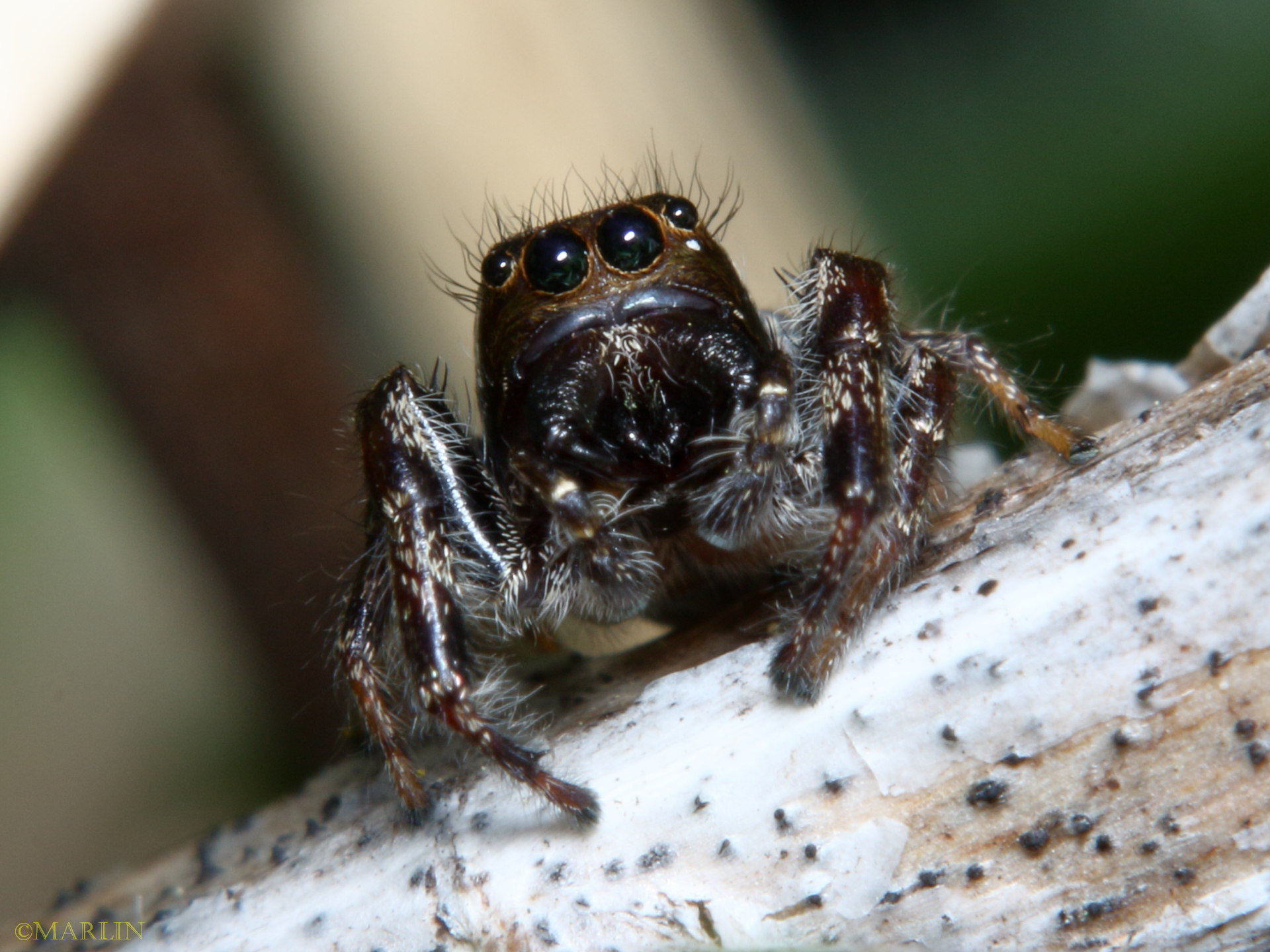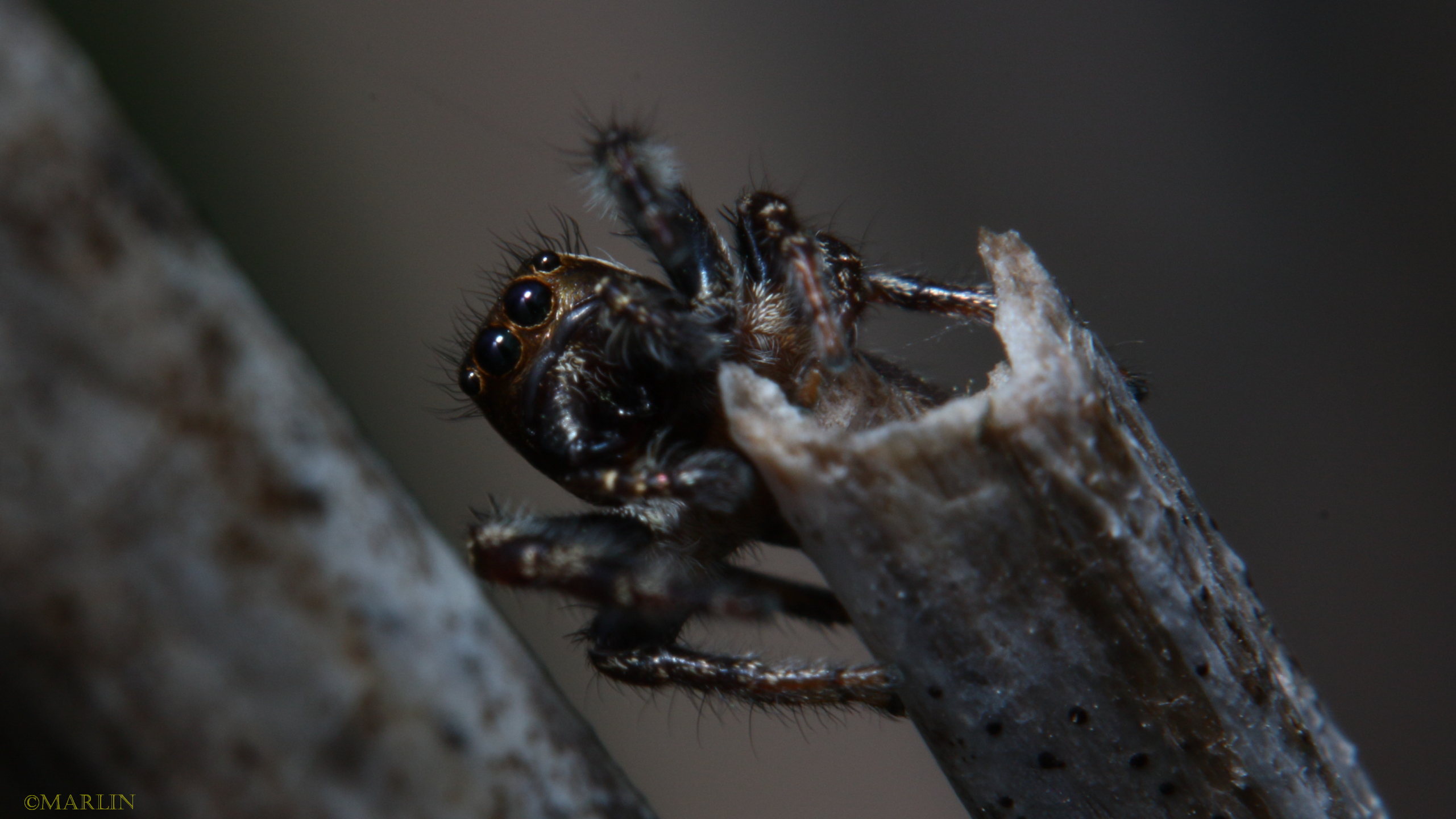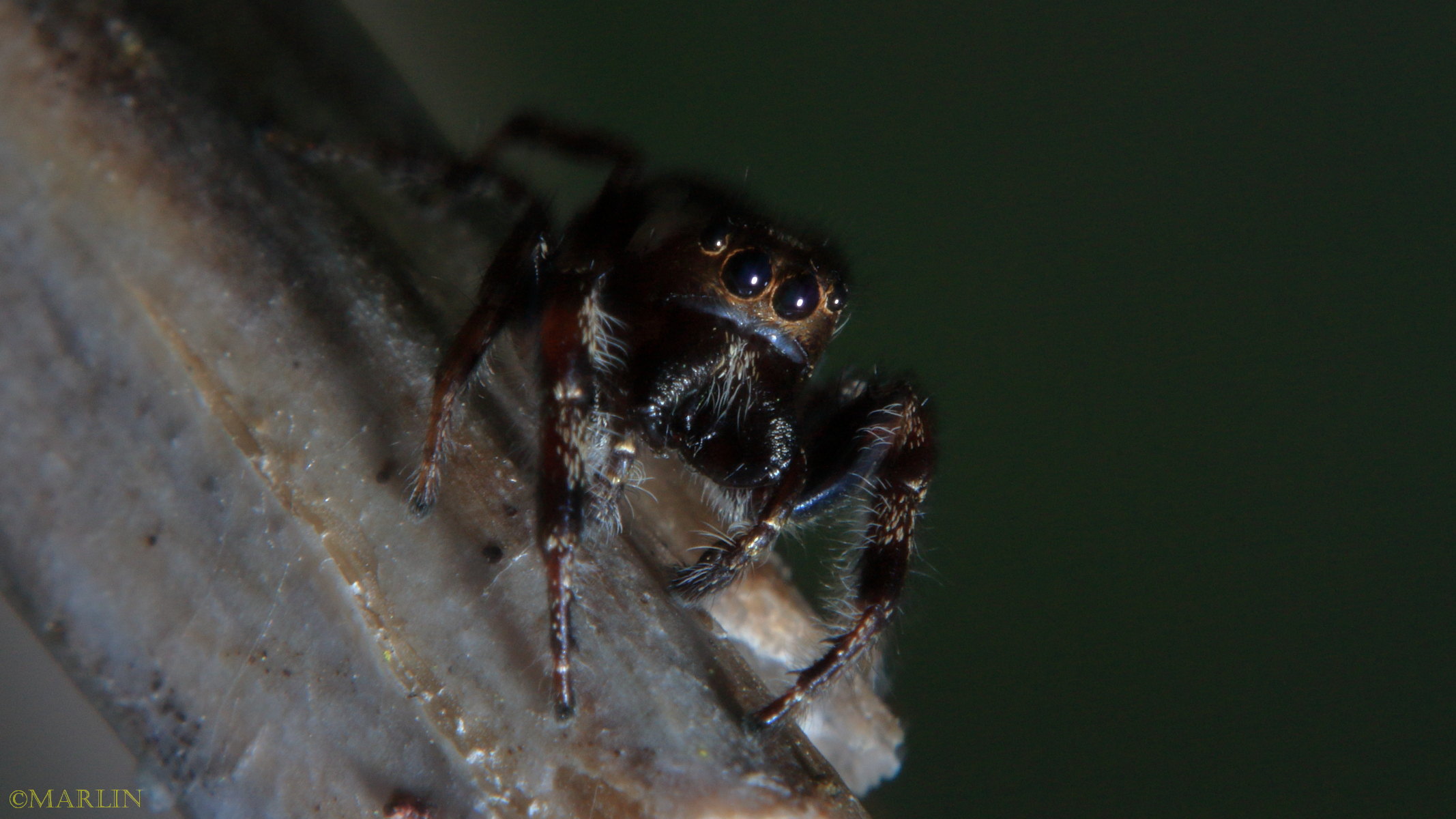Bronze Jumping Spider – Eris militaris
Genus Eris author Nicholas Hentz (1797-1856), was a French-born entomologist, engraver, and miniature painter, who spoke several languages and studied medicine in Paris and at Harvard. He also authored several school textbooks, a treatise on the American alligator, novels, and numerous articles. His posthumous Spiders of the United States, a collection of scholarly articles, paintings, and drawings on the subject, long remained a standard in the field of arachnology.
Born in Versaille, France, Hentz fled with his family in 1816. He eventually settled in Philadelphia, where he became a member of The American Academy of Natural Sciences and remained one until his death in Florida in 1856. He illustrated numerous articles published in their Journal, and he named over 100 different species of spiders, mostly in Salticidae.
Being one of the first scientists to study and illustrate spiders, Hentz was a friend of Charles Alexandre Lesueur (1778-1846), president of the Academy of Natural Sciences of Philadelphia, and of the American Geological Society. Hentz also developed a productive collaboration and lasting friendship with Thomas Say (1787-1834), the putative father of American entomology. Say was a taxonomist, as were most of the early entomologists, and he described considerably more than 1,000 new species of beetles and over 400 insects of other orders, including species in every important insect order [4].
Say hoped Hentz would assist him in illustrating his own 3-volume American Entomology, or Descriptions of the Insects of North America, but distance prevented the successful conclusion of that project. [4]
Male jumping spiders have an unusual method of inseminating their mates: they use the little “feelers” beside the face – in females, these palpi are simple and leg-like; both males and females use them like little hands, to manipulate food and to clean their faces. Adult male palpi are larger and much more complex (that’s one way to tell a male spider: males have palpi like boxing gloves).
The male prepares to mate by spinning a small web and depositing a drop of sperm on it from the underside of his abdomen. He then places the tip of the palp into the sperm, and draws the sperm through the palp’s opening into the sperm duct where it is stored. He then goes cruising. When he finds a female, he performs a courtship dance for her, during which she assesses his fitness. If she accepts him, he places his palp against an opening on the underside of her abdomen (her epigynum), and guides it into place by putting a thumb-like projection, the tibial apophysis, into a groove in her epigynum. The palpus then expands, locks in place, and injects the sperm.
References
- Bugguide.net, Bronze Jumping Spider
- Jumping Spider Vision David Edwin Hill, licensed under the Creative Commons 3.0 Unported
- Ewell Sale Stewart Library, Academy of Natural Sciences of Philadelphia, Collection 971. Nicholas Marcellus Hentz Watercolors.
- Clark Kimberling, University of Evansville, “Thomas Say, Father of American Entomology“
Spiders Main | Spiders Index | Orb Weavers | Jumping Spiders | Nursery Web




